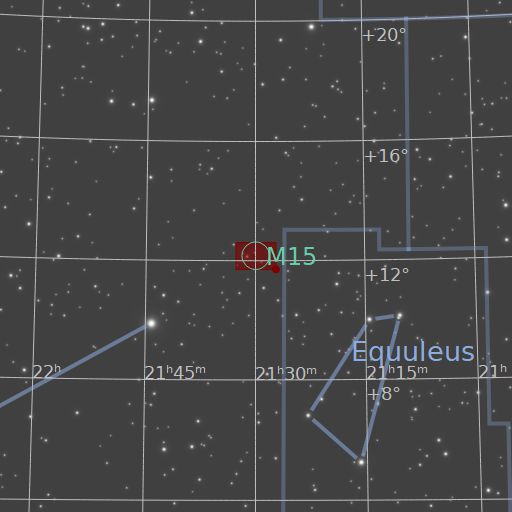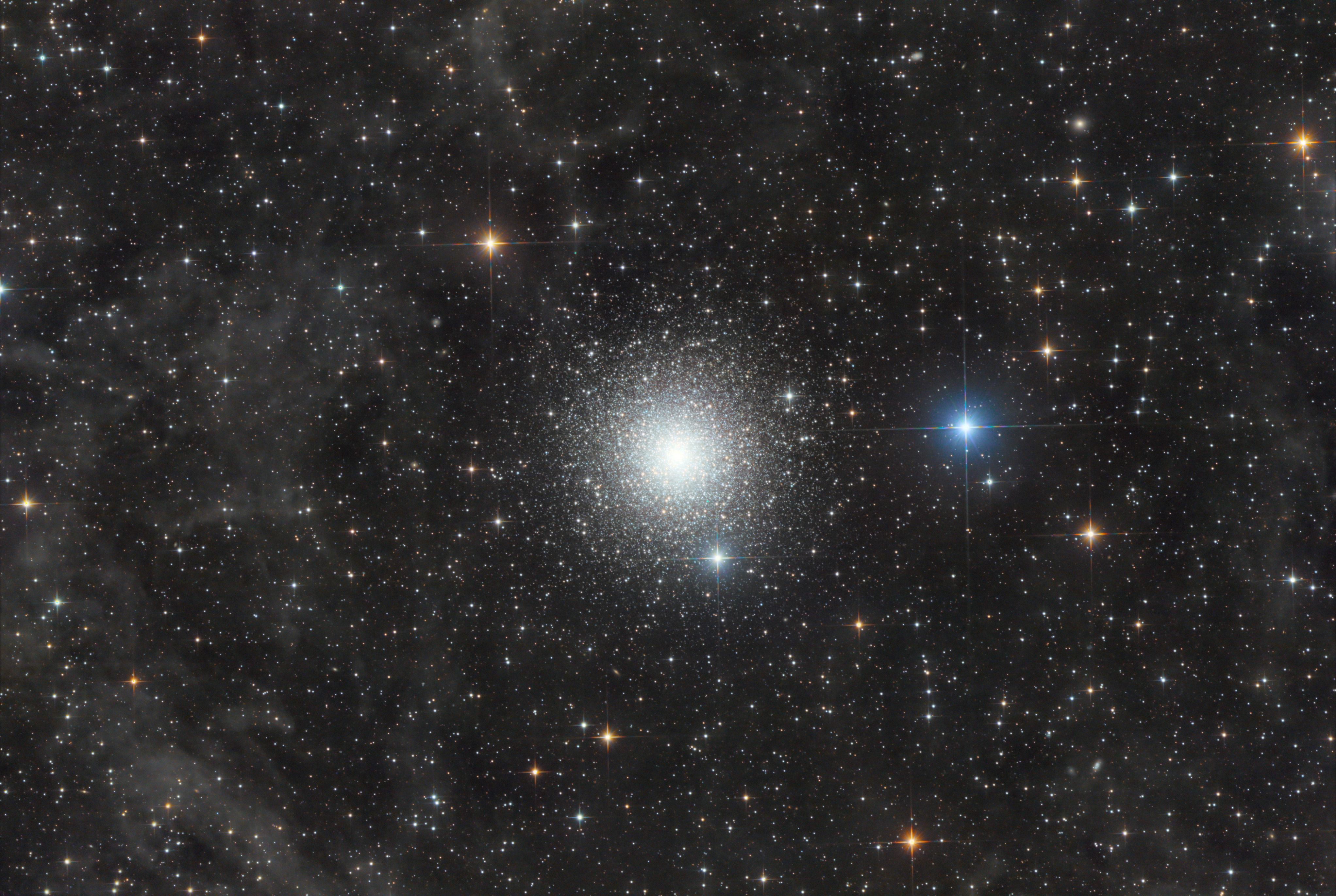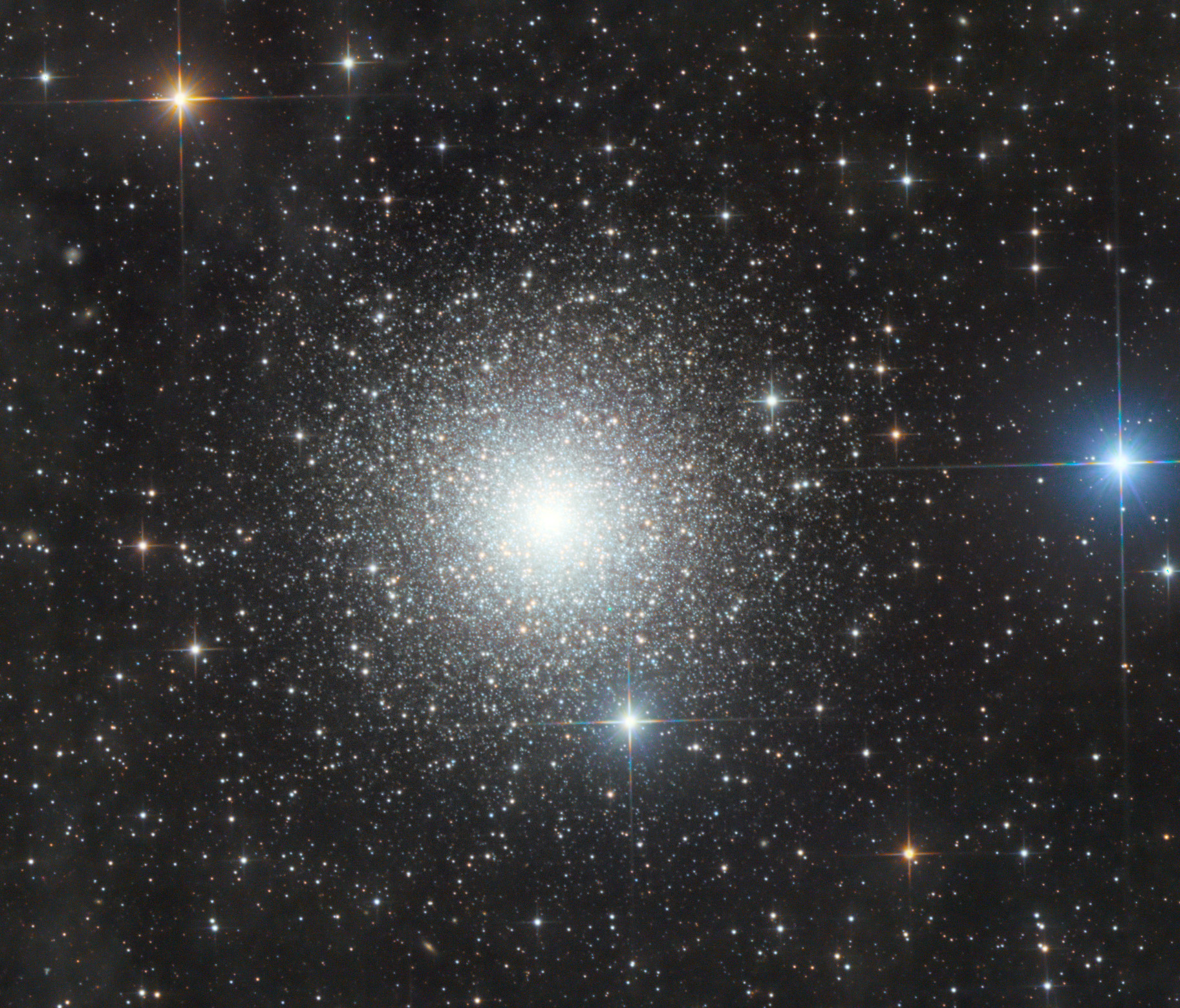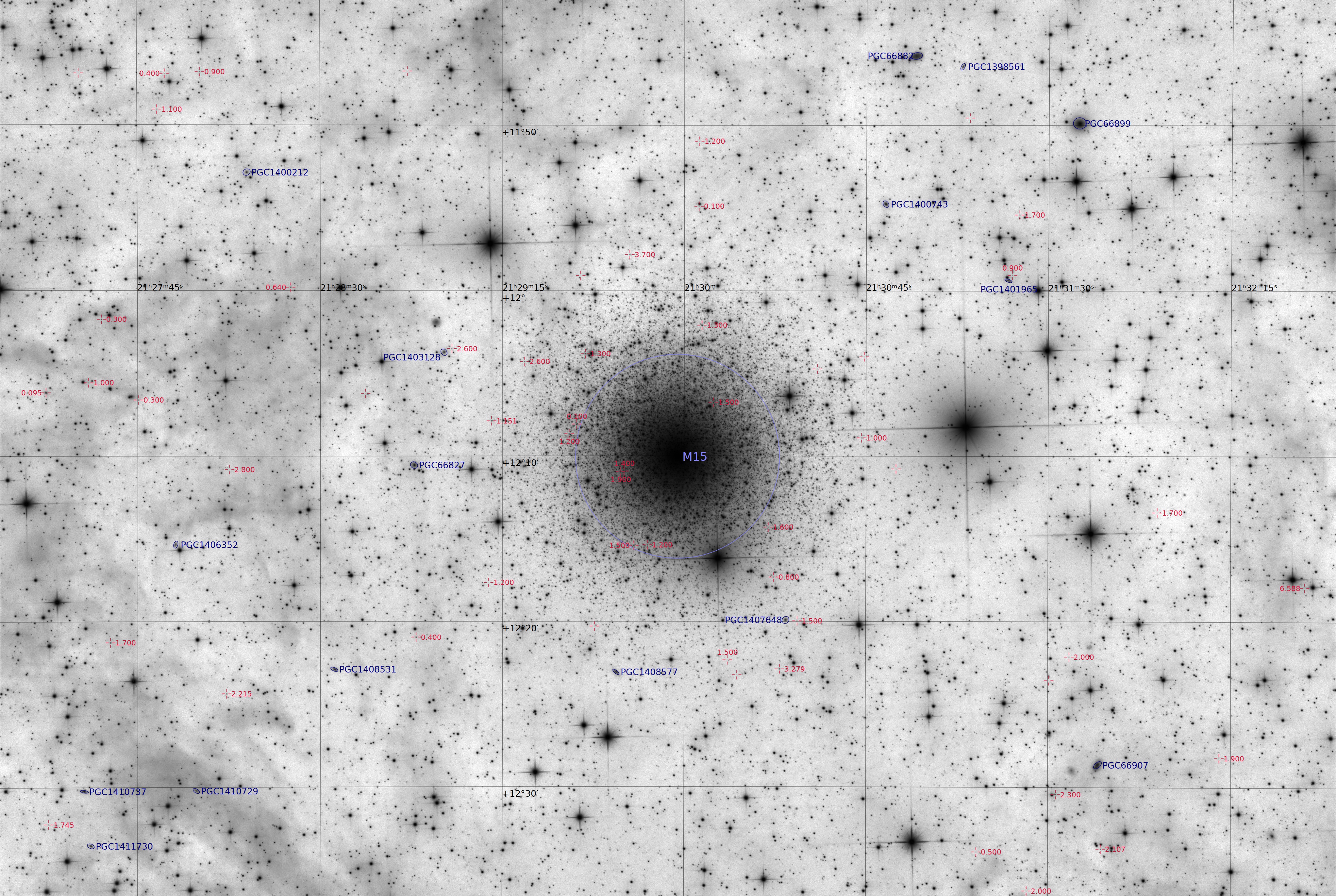

M 15 - The Pegasus Cluster
Astrobin Top Pick
Messier 15: A Globular Cluster of Cosmic Significance
Messier 15, or M15, nestled in the constellation Pegasus, is a celestial jewel that holds both aesthetic charm and scientific intrigue for amateur astronomers and astrophotographers.
Scientific Significance:
Stellar Density: M15 boasts one of the densest cores of any known globular cluster. In its heart, stars are packed so tightly that their gravitationally bound dance is a marvel to behold. The study of these densely populated regions contributes to our understanding of stellar dynamics.
Ancient Stellar Population: With an estimated age exceeding 12 billion years, M15's stars offer a glimpse into the early epochs of our Milky Way galaxy. This venerable age makes it an invaluable cosmic time capsule for astronomers exploring the universe's past.
Variable Stars: M15 hosts a rich population of variable stars, including pulsating RR Lyrae stars. The study of these variable stars aids in determining the cluster's distance and age, providing valuable insights into the broader cosmic context.
Stellar Evolution: Investigating M15 allows astronomers to explore the processes of stellar evolution. Observations reveal stars at various stages of their life cycles, shedding light on the lifecycles of celestial objects.
Astrophotography Challenges: M15 presents astrophotographers with unique challenges and rewards. Capturing its intricate core, densely packed with stars, requires precise techniques and long exposures to unveil its true character.
Concluding Thoughts:
Messier 15, with its stellar density, ancient stars, and scientific value, beckons to those who seek to explore the cosmos. For amateur astronomers and astrophotographers, it offers not only a visual spectacle but also a window into the scientific mysteries of our universe. In capturing its beauty and uncovering its secrets, you embark on a cosmic journey of discovery and wonder. Happy stargazing and astrophotography!
-
Category
Globular Cluster
-
Coordinates
RA 21h 29m 58,3s
DEC +12° 10′ 01″ -
Distance
11 kpc
-
Apparent Mag
6.2 mag (int)
-
Equipment
TS ONTC8 200/800 Astrograph
iOptron CEM70G
QHY 294m pro
ZWO ASI178mm
-
Exposure
L: 174 x 180 s
L(short): 7200 x 1s
R: 40 x 180 s
G: 61 x 180 s
B: 40 x 180 s
Total Integration: 14.8 h -
Publication Date
29.10.2023


